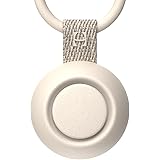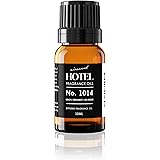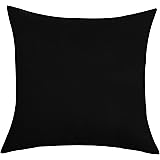Build Your Own Budget-Friendly Kitchen Island for Around $20: A Comprehensive DIY Guide
Did you know that a well-designed kitchen island can dramatically improve a kitchen’s functionality, aesthetics, and even its resale value? While professional installations or store-bought units can easily cost hundreds or even thousands of dollars, the idea of creating a custom, high-impact piece for a fraction of that price might seem like a dream. However, as demonstrated in the insightful video above, achieving a robust and stylish DIY kitchen island for around $20 is not only possible but also a remarkably rewarding woodworking project.
This detailed guide expands on the video’s straightforward instructions, providing deeper insights, practical tips, and additional context to help you confidently construct your own budget kitchen island. We’ll delve into the specifics of material selection, precise cutting techniques, secure assembly methods, and the crucial steps for finishing your new kitchen centerpiece.
The Undeniable Value of a DIY Kitchen Island
Creating your own custom kitchen island offers more than just significant cost savings. It provides the unique opportunity to tailor the piece exactly to your kitchen’s dimensions and your household’s specific needs. For many homeowners, a kitchen island serves multiple vital roles:
- Increased Counter Space: Crucial for meal prep, baking, or even just setting down groceries.
- Enhanced Storage: The simple design allows for open shelving, perfect for baskets, cookbooks, or decorative items.
- Defined Zones: It can help delineate different areas in an open-concept living space.
- Social Hub: An island naturally becomes a gathering point for family and friends.
- Personalized Aesthetic: You get to choose the finish, ensuring it perfectly complements your existing decor.
In addition, recent studies often highlight how kitchen upgrades, even minor ones, can offer a strong return on investment. A functional and attractive kitchen island can make your home more appealing to potential buyers, should you decide to sell in the future, proving that an affordable kitchen solution like this can have lasting benefits.
Gathering Your Materials for the $20 Kitchen Island
The beauty of this DIY kitchen island project lies in its simplicity and the affordability of its core materials. The video outlines precisely what you’ll need. Sourcing these efficiently is key to maintaining the minimal budget. Here’s a breakdown of the essential items:
Lumber List:
- Two 4″x4″x6ft sections: These substantial pieces will form the robust legs of your island, providing excellent stability.
- Three 1″x10″x6ft boards: These will become the island’s countertop, offering ample surface area for various kitchen tasks.
- Four 1″x4″x8ft boards: These lighter boards are crucial for constructing the structural framework that supports the countertop and integrates the lower shelf.
Hardware & Finishing Supplies:
- 2″ Nails: Opt for common nails, specifically designed for general woodworking, ensuring strong connections between your wooden components.
- Sanding Block: Essential for smoothing out rough edges and preparing the wood for finishing. Consider having a few different grit levels (e.g., 80-grit for initial shaping, 120-grit for general smoothing, 220-grit for fine finishing).
- Stain/Polyurethane: This step is vital for both protecting the wood and enhancing its natural beauty. You might choose a wood stain to change the color, followed by a polyurethane topcoat for durability, or an all-in-one stain-and-sealant product for simplicity.
When purchasing lumber, inspect each board carefully. Look for straight pieces free from significant warps, cracks, or large knots, as these can compromise both the structural integrity and the final appearance of your custom furniture piece. Small imperfections can be part of the charm, but avoid major flaws.
Precision Cutting: The Foundation of Your Island
Accurate measurements and precise cuts are fundamental to a sturdy and professional-looking DIY kitchen island. The video provides exact dimensions, which we’ll reiterate and expand upon, emphasizing safety and technique during this crucial phase. Always wear appropriate safety gear, including eye protection, when operating power tools.
Step-by-Step Cutting Plan:
-
For the Legs (4″x4″s):
Take your two 6ft (72″) 4″x4″ sections. Cut them down to create four individual pieces, each measuring 35″ long. These will serve as the strong, supporting legs for your island. A miter saw or a circular saw with a guide is ideal for ensuring perfectly square cuts.
-
For the Countertop (1″x10″s):
Next, take each of your three 6ft (72″) 1″x10″ boards. Trim each board down to 60″ long. These three pieces, when joined, will form the spacious 5-foot long countertop surface of your island. Ensure these cuts are clean to facilitate a tight seam.
-
For the Framework (1″x4″s):
From your four 8ft (96″) 1″x4″ boards, you will create two distinct sets of frame pieces:
- Long Support Pieces: Cut three pieces, each measuring 58″ long. These will be the primary horizontal supports for your countertop.
- Short Cross Pieces: Cut six pieces, each measuring 24″ long. These will form the crucial cross-bracing for both the top frame and the lower shelf.
As the video illustrates, a clear stack of your precisely cut lumber should appear, ready for assembly. Double-checking your measurements before cutting, and using a reliable measuring tape, will prevent costly mistakes and ensure all components fit together seamlessly for your kitchen storage solution.
Assembling Your Custom Kitchen Island
With all your lumber cut, the construction phase begins. This is where your woodworking skills come into play, even if you’re a beginner. The method outlined prioritizes simplicity and strength, ensuring your budget-friendly island is stable and durable.
Building the Countertop Frame:
-
First Frame Rectangle: Take two of the 58″ long 1″x4″ pieces and four of the 24″ long 1″x4″ pieces. Arrange them to form a rectangle, using the two 58″ pieces as the long sides and two 24″ pieces as the short ends. The remaining two 24″ pieces will act as interior cross-braces, evenly spaced along the 58″ length.
-
Secure Connections: Using your 2″ nails, hammer two nails at each junction where the 1″x4″ pieces meet. This creates a strong, rigid frame that will support your countertop. Consider pre-drilling pilot holes if you’re working with harder wood or if you’re concerned about splitting, though for common pine, careful hammering is often sufficient.
Attaching the Countertop Boards:
-
Center Board First: Carefully center one of the 1″x10″ countertop pieces across the frame you just built. The video highlights that each side should have a 1-inch overhang. Secure this board by nailing it down into the 1″x4″ frame pieces below. Use multiple nails along the length for a firm attachment.
-
Add Side Boards: Lay the remaining two 1″x10″ pieces on either side of the center board, aligning them perfectly. Nail these into place, again ensuring they are securely fastened to the underlying 1″x4″ framework. These three boards form the complete island top.
Attaching the Legs:
Once the countertop is securely in place and the frame is solid, flip the entire assembly over. Now it’s time to attach the four 35″ 4″x4″ legs. Position each leg flush with the corner of the frame. Drive four sturdy 2″ nails into each leg – two nails per adjacent side of the leg, going into the 1″x4″ frame and countertop. This method creates a remarkably strong connection, ensuring the legs won’t wobble.
Installing the Lower Shelf:
Stand your almost-complete island upright. You should have three 1″x4″ pieces remaining: two 24″ pieces and one 58″ piece. This will form a practical lower shelf, adding significant utility to your DIY kitchen island for storage or display.
-
Attach Short Ends: Take the two 24″ pieces. Measure up 8″ from the bottom of the legs on each end of the island. Attach these 24″ pieces horizontally between the legs at the 8″ mark, flush with the outside edge of the legs. Use two nails into each leg for a secure fit.
-
Connect with Long Piece: Finally, take the remaining 58″ piece. This will connect the two 24″ end pieces you just installed, running along the front or back of the island. Nail it into place, creating a solid rectangular frame for your lower shelf. You can add additional 1″x4″s across this frame later if you wish to create a solid shelf surface, or leave it open for a minimalist look, ideal for large baskets.
By carefully following these assembly steps, you will quickly see your custom kitchen island take shape, transforming from a pile of lumber into a functional piece of home furniture.
The Finishing Touches: Sanding and Staining Your Island
The final steps are crucial for both the longevity and aesthetic appeal of your DIY kitchen island. Proper sanding and a good finish will protect the wood and make your $20 investment look like a designer piece.
Sanding for Smoothness:
Using your sanding block, meticulously sand the entire island. Start with a medium-grit sandpaper (e.g., 100 or 120-grit) to smooth out any rough patches, splinters, or inconsistencies from cutting and handling. Once the surface feels generally smooth, move to a finer grit (e.g., 180 or 220-grit) for a silky-smooth finish, especially on the countertop. Sanding with the grain of the wood will prevent scratches. After sanding, wipe the entire island down with a tack cloth or a damp rag to remove all dust, which is critical for an even stain application.
Staining and Protecting:
Applying stain is where the personality of your island truly emerges. Choose a stain color that complements your kitchen’s existing cabinetry or floor. Use a rag or a foam brush to apply the stain evenly to all surfaces of the island, following the wood grain. Allow the stain to penetrate for the recommended time (check the product label), then use a clean rag to wipe away any excess. This ensures an even color and prevents stickiness. Depending on your desired depth of color, you might apply a second coat after the first has dried completely.
After the stain has dried thoroughly (which can take 24-48 hours depending on humidity), it’s time to apply a protective topcoat. Polyurethane is an excellent choice for kitchen surfaces due to its durability and resistance to moisture and scratches. Apply thin, even coats with a quality brush, allowing each coat to dry completely and lightly sanding with a very fine-grit sandpaper (e.g., 320-grit) between coats. Aim for 2-3 coats for optimal protection, especially on the countertop.
Enhancing Your Island: Ideas for Customization and Longevity
Beyond the basic build, there are numerous ways to personalize and upgrade your budget kitchen island. Consider these additions to truly make it your own:
- Casters: Add locking swivel casters to the bottom of the legs to make your island mobile, allowing you to easily move it for cleaning or rearranging your kitchen layout.
- Hooks: Install small hooks on the sides for hanging dish towels, pot holders, or even lightweight utensils.
- Additional Shelving: If you desire a solid lower shelf, cut additional 1″x10″ pieces to fit within the lower frame and secure them down.
- Different Countertop Materials: While wood is budget-friendly, you could potentially add a tile top, a thin sheet of stainless steel, or even a pre-cut laminate countertop to your wooden base for a different look and enhanced durability.
- Paint vs. Stain: Instead of stain, consider painting your island a vibrant color to match a specific kitchen theme or a neutral tone for a classic look. Ensure you use a good primer first.
- Edge Banding: For a more refined look on the countertop, you could add decorative trim or edge banding around the wood planks.
Maintaining your DIY kitchen island is also straightforward. Regularly wipe down the surfaces with a mild cleaner. For heavily used areas like the countertop, you might need to reapply a protective topcoat every few years, especially if it shows signs of wear and tear. This simple maintenance ensures your $20 investment continues to serve your kitchen brilliantly for years to come, proving itself as a durable and smart home improvement.











